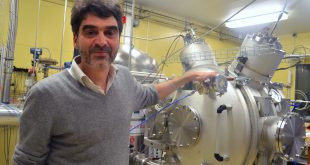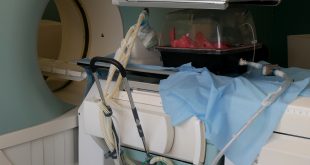Digital twins, digital doubles – what exactly do these terms mean? Raksmey Phan, an engineer at the Mines Saint-Étienne Centre for Biomedical and Health Engineering (CIS)[1], talks to us about the advantages and advances offered by these new tools, as well as the issues involved. What does a digital twin refer to? Raksmey Phan: If you have a digital, …
Read More »Search Results for: health
AiiNTENSE: AI for intensive care units
The start-up AiiNTENSE was incubated at IMT Starter and develops decision support tools for healthcare with the aim of advising intensive care personnel on the most appropriate therapeutic procedures. To this end, the start-up is developing a data platform of all diseases and conditions, which it has made available to researchers. It therefore seeks to provide support for launching clinical …
Read More »iXblue: Extreme Fiber Optics
Since 2006, iXblue, a French company based in Lannion, and the Hubert Curien laboratory [1] in Saint-Étienne have partnered to develop cutting-edge fiber optics. This long partnership has established iXblue as a global reference in the use of fiber optics in harsh environments. The scientific and technological advances have enabled the company to offer solutions for the nuclear, space and …
Read More »MADEin4: digital twinning and predictive maintenance for industry
The European MADEin4 project was launched in April 2019 for a three-year period. It aims to help semiconductor manufacturers and equipment suppliers play an active role in the continuous improvement of their equipment. How? By relying on new digital twinning and predictive maintenance technologies. Agnès Roussy and Valéria Borodin, research professors at Mines Saint-Étienne, a member of the MADEin4 project, …
Read More »A tribe of irreducible codling moths
In agriculture, biological alternatives to pesticides are being sought for environmental and health reasons. Use of a virus as a biocontrol agent for crop pests has become relatively widespread. One such example is Cydia pomonella granulovirus. It has been used for decades to target a crop pest that is fond of apples and pears: the codling moth. Miguel Lopez-Ferber, a …
Read More »Is dark matter the key to the medical scanner of the future?
A team of researchers at IMT Atlantique is developing a new type of medical scanner called XEMIS. To create the device, the team drew on their previous research in fundamental physics and the detection of dark matter, using liquid xenon technology. The first time the device was tested was using small animals. It allowed the scientists to significantly lower the …
Read More »Aerosol therapy: An ex vivo model of lungs
A researcher in Health Engineering at Mines Saint-Étienne, Jérémie Pourchez, and his colleagues at the Saint-Étienne University Hospital, have developed an ex vivo model of lungs to help improve medical aerosol therapy devices. An advantage of this technology is that scientists can study inhalation therapy whilst limiting the amount of animal testing that they use. This article is part …
Read More »Bone implants to stimulate bone regeneration
Mines Saint-Étienne’s Centre for Biomedical and Healthcare Engineering (CIS) seeks to improve healthcare through innovations in engineering. David Marchat, a materials researcher at CIS, is working on developing calcium phosphate-based biomaterials. Due to their ability to interact with living organisms, these bone implants can help regenerate bones. This article is part of our dossier “When engineering helps improve healthcare“ …
Read More »An “electronic nose” analyzes people’s breath to help sniff out diseases
In partnership with IMT Atlantique, a team of researchers at IMT Lille Douai have developed a device which can measure the level of ammonia in someone’s breath. The aim of the artificial nose is to use this device to create a personalized follow-up care for patients affected by chronic kidney disease. Eventually, the machine could even allow doctors to detect …
Read More »An autonomous contact lens to improve human vision
Two teams from IMT Atlantique and Mines Saint-Étienne have developed an autonomous contact lens which is powered by an integrated flexible micro-battery. This invention is a world first that opens new health prospects, whilst also opening the door for scientists to develop other human-machine interfaces. Human augmentation, a field of research that aims to enhance human abilities through technological …
Read More » I'MTech L'actualité scientifique et technologique de l'IMT
I'MTech L'actualité scientifique et technologique de l'IMT









